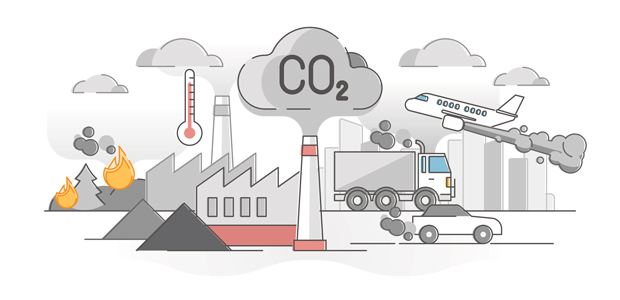
The unsung heroes in reducing emissions in transport
If there’s one thing we’ve learned from COP26, it’s that we’ve a long way to go before we hit our CO2 emissions targets of which the transport industry is one of the biggest contributors. The sector accounts for 23% of the world’s energy-related CO2 emissions, and so, if businesses neglect to place sustainability at the crux of their strategies, they’re likely to fall behind, fast.
There’s so much ongoing discourse about going greener with new transport methods, but if the industry truly wishes to progress with its sustainability targets, one thing that it needs to leverage is the latest data-capturing and immersive technology available. By collecting data on infrastructure emissions, they can make sure the data becomes visually accessible and useable, so that it can be better understood to create real change. This technology is available now, but it’s simply not being harnessed to its full potential.
The current state of sustainability within the transport sector
The UK is currently aiming to reduce emissions by 78% by 2035, and whilst these are some of the world’s most ambitious climate change targets to-date, they are achievable, but only if the transport sector plays its part.
That’s not to say that the sector has been wholly complacent so far: we have seen a shift towards more environmentally friendly modes of transport, such as electric and hybrid cars, with some studies revealing that one electric car on the road can save an average of 1.5 million grams of CO2. Other modes of transport are also sure to follow suit, such as HS2, which according to reports can achieve savings of 57 grams of carbon emissions per person, per km, when compared with the same journey by petrol car, or even possibly the electric planes that Nasa are currently working on.
However, these newer models of transport are not always better for the environment and are ultimately just a piece of the wider solution. It’s clear, therefore, that greater strides need to be taken if the transport industry is to play its part in reducing overall emissions and contribute to the UK’s ambitious targets by 2035.
The role of Data Capture and Immersive Technology
While evaluating and changing modes of transport is a good start, it doesn’t tackle another side of the problem that is often missed - the infrastructure required to support said mode of travel. Using new technology to ensure infrastructure such as roads, rail tracks, tunnels, stations and airports are sustainable should be a key aspect of any transport company’s net-zero endeavour and in many cases even the start of their initiative.
Immersive technology refers to technologies which let us experience data and information in the same ways we do in our everyday surroundings by either immersing us inside a computer-generated space or by overlaying the data we need in a way that we can leverage it interactively; namely Virtual Reality (VR), Augmented Reality (AR) or Extended Reality (XR). These engaging technologies simulate the world around us and are a powerful tool in unlocking the value of data by enabling the visualisation of information and data from multiple data feeds to be assembled in the context of its environment.
Using this technology, businesses can process the captured data to create digital twins of real-world spaces that fuse all the data needed to assess the entire health of the building or space, and analyse what is impacting the environment inside and outside that space. It provides the insights into where the hotspots are and thus where you need to focus your efforts. Following here, ongoing measurement can show how pollutants such as CO2 are reducing (or increasing) over time, which allows for predictions and critical decisions to be made based on real-time data.
The key to hitting sustainability targets
Ultimately, individuals alone cannot visualise the effects of climate change. While environmental advocates, governments, and scientists are doing their best to shed light on the urgency of the issue, the key to enabling more people to understand fully is in the potential of capture and immersive technology together. Immersive technology can place the captured data visually, in a comprehensible way, to help map the effects of climate change and sustainability before the simulation becomes our reality, whilst also creating a new, exciting, and memorable form of storytelling.
From a sustainable business perspective, the information that can be gathered and assessed via digital twins is sure to be fundamental in the fight against climate change, and we’ll begin to see more companies testing out plans and actions in real-time without having to deal with the consequences thanks to simulations and digital models. It may not be the complete answer to solving CO2 emissions issues, but it sure can prove to help exponentially if implemented correctly.

